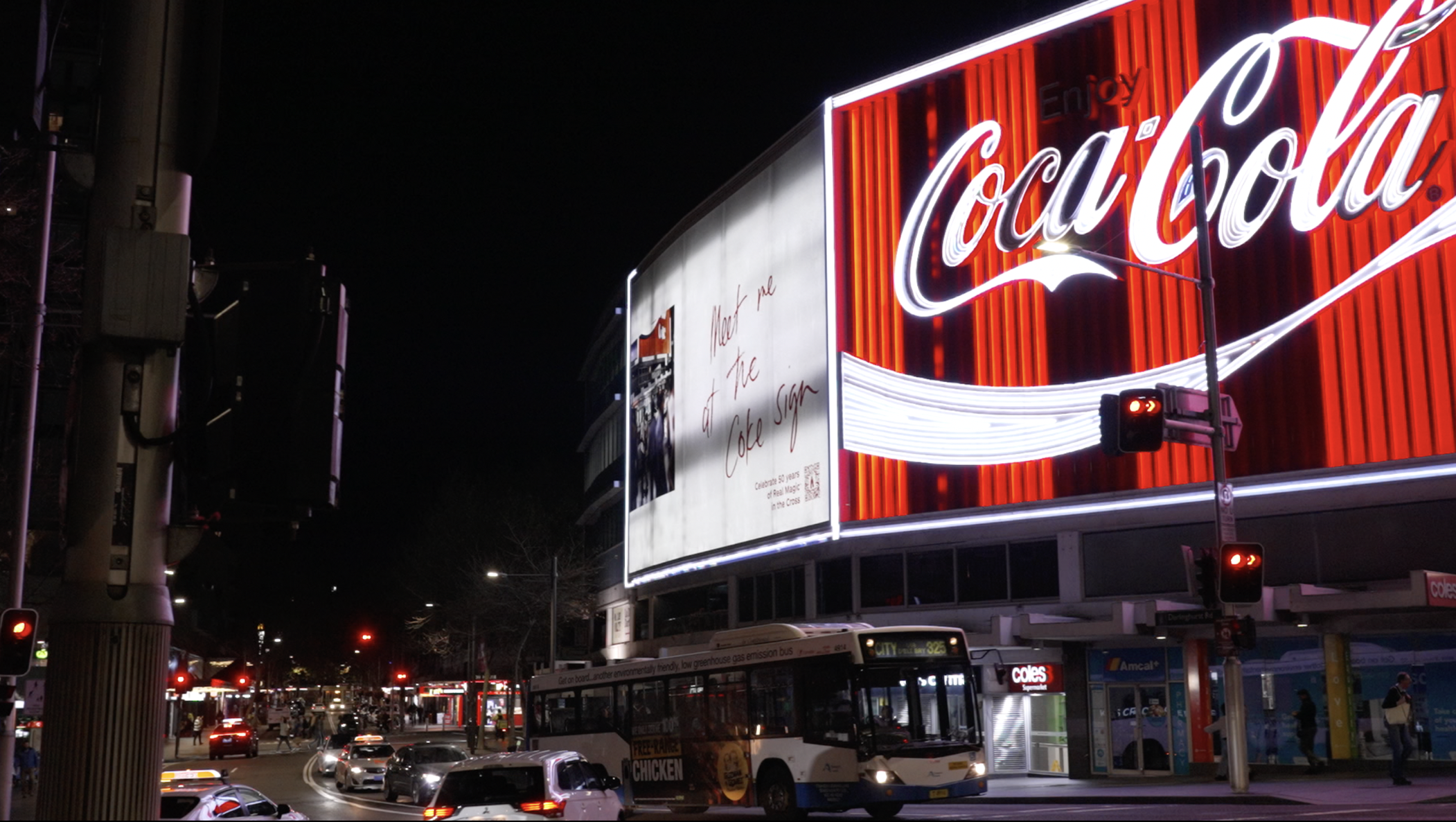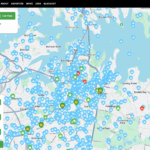For Amy Chen her small Sydney apartment is the first permanent home she has had in three years — yet the road to getting it has been anything but easy.
The two-bedroom community-funded social housing apartment in Hunters Hill is basic, but far better than the couches of friends and even tents she has had to settle for until now.
Originally from China, Amy, now aged in her mid-50s, was running a thriving business in Singapore when she met her future Australian husband through a dating website.
They married, and in 2015, Amy moved to Australia with her 19-year-old son on a visitor visa sponsored by her new husband. Although unable to recognise it at the time, she alleges he was abusive throughout their relationship, with his behaviour only worsening after they moved.
“I became homeless in the Central Coast when my ex kicked us out of our home,” she says. “There were no Chinese people there, and my English was not good.
“I was so lonely, so isolated — most of the time, I felt hopeless.”
Since then Amy has moved more than 50 times in three years, finding temporary homes in women’s shelters and by couch-surfing with friends.
But she is far from alone, and her story provides a glimpse into a crisis affecting women nationwide.
According to the latest census released by the Australian Bureau of Statistics, 44.2 per cent of the 122,494 people experiencing homelessness in Australia are women, with the leading cause of homelessness family and domestic violence.
Homelessness Australia’s 2023-24 report found 46 per cent of women cited family and domestic violence as the primary reason for seeking specialist homelessness services.

Dr Emma Power. Picture supplied.
Dr Emma Power, an associate professor of Geography and Urban Studies at Western Sydney University, says the reality of women’s homelessness can look different from what many imagine, with women often experiencing a form of homelessness that is hidden from the community, as they are less likely to be sleeping rough on the streets.
“This is because for women, these public spaces are unsafe and put them at high physical risk,” she adds.
“Women are more likely to do things like couch surfing… and they will have to move as you can’t stay long term on someone’s couch or in someone’s spare bedroom.”
This constant movement can create a cycle of instability, a reality Amy knows all too well.
“I lived in a female pastor’s home in Woy Woy for a few months, and then places all over Sydney,” she recalls.
A shortage of affordable housing
Experts warn that Australia’s shortage of affordable housing is intensifying women’s homelessness.
Mission Australia estimates around 640,000 households nationwide are in housing stress, including households with no home, or those living in over-crowded or expensive rentals costing more than 30 per cent of their income, and unable to access affordable housing.
Dr Power says the shortage is pushing people into the private rental sector, where lower-income earners, including older women relying on the Age Pension, face extreme insecurity.
“This is partly due to the Age Pension system, which assumes older Australians will own their homes in retirement and have minimal housing costs,” she adds.
“There are also gendered reasons: the gender pay gap, career interruptions, and unpaid caregiving responsibilities lead to women earning less over their working lives.
“This leaves them with lower superannuation and limited financial support in older age.”
Professor Alan Morris, from the Institute for Public Policy and Governance at the University of Technology Sydney, says decades of underinvestment in social housing have also fuelled the crisis.
“The proportion of social housing in Australia has fallen from about 6 per cent of the total housing stock in the mid-1990s to around 4 per cent now,” he says.
“People are then waiting years for the homes they need, and those waiting for social housing are often living in extremely poor conditions.”
Infrastructure is falling behind
According to a report from the Centre of Western Sydney, nearly 60,000 social and affordable housing dwellings are located in Western Sydney, making up more than 60 per cent of Greater Sydney’s total.
Demand for housing is only expected to rise, yet the region’s infrastructure is struggling to keep up.

Photo: Dr Michelle Cull (Supplied)
Dr Michelle Cull, an associate professor of Accounting and Financial Planning at Western Sydney University, says locals, especially women with children, are struggling with the region’s lagging infrastructure..
“We’re often driving these long commutes where you have added expenses from petrol and tolls, and if you use public transport, it’s also costing you time,” she says.
“I don’t have young children now, but when I did, the anxiety of needing to get back to pick them up, while being stuck in traffic with nothing you can do — it was overwhelming.”
Dr Cull says for housing initiatives to support women long-term, homes must be placed near essential services like childcare, healthcare, and reliable public transport, adding:
“If we build houses with the right infrastructure, people should be able to live and work in that community.”
Migrants face additional housing challenges
Language barriers, limited knowledge of legal systems, and visa restrictions leave many migrants unable to access secure housing, with data showing culturally and linguistically diverse migrants make up 22 per cent of people experiencing homelessness in Australia.
For Amy, her ability to stay in Australia was threatened, she says, when her husband applied for and withdrew her visa twice.
With support from victim services and legal aid, however, she eventually authenticated her marriage and was recognised as a domestic abuse survivor.
In 2019, she and her son were granted permanent residency, and in the same year, a homelessness specialist connected Amy with community housing provider.
I kept coughing up blood… I ended up with pneumonia.
While it was a step forward, Amy’s struggles were far from over.
“When I first walked into the (home), it smelled so bad, there was black mould everywhere,” she says.
“In this room, I kept coughing up blood… I ended up with pneumonia.”
The space was so unliveable Amy resorted to temporarily living in a tent. Overwhelmed and struggling with unsafe living conditions, she later suffered a stroke.
Although some repairs were made after a prolonged dispute with her housing provider, the constant struggle for secure housing left her feeling drained.

Amy was left with severe physical and mental effects from the stroke, leaving her reliant on a walker for mobility. Photo: Christine Lee
“I don’t need much… all I want is a safe bed where I can sleep,” she says. “But every time something goes wrong, I have to fight again; it’s exhausting.”
Government solutions
With the Labor Party securing a historic second term, all eyes are on whether the government can deliver on its housing commitments.
The party has pledged to build 55,000 social and affordable homes through the Housing Australia Future Fund and Social Housing Accelerator. It also announced a $1 billion program supporting crisis and transitional accommodation for people experiencing homelessness.
Experts say these policies are a step in the right direction.
“If we could build sufficient public and social housing, then we would be committing to give people who are living on low incomes secure homes,” says Dr Power.
“We could actually end the homelessness crisis by doing that.”
However, Dr Power adds more can be done to make housing accessible across the board for all people, including removing measures like the capital gains tax and negative gearing, which give investors an edge over home buyers.
Professor Morris agrees that while increasing supply is essential, new homes may still be unaffordable without targeted measures.
“There needs to be legislation put in place which has targets for the creation of social housing, and the amount of federal and state funding for this housing needs to increase,” he says.
Holistic and gender-responsive solutions needed
Bianca Tini Brunozzi, a campaign and advocacy officer at YWCA, says their Safe Homes, Equal Futures campaign aims to address Australia’s housing crisis through a five-point plan focused on systemic, long-term solutions.

Photo: Bianca Tini Brunozzi (Supplied)
YWCA Australia is an organisation that provides housing, domestic and family violence support, and advocacy programs for women and gender-diverse people across the country.
“It’s so important that women have access to crisis and transitional housing, especially to leave domestic and family violence,” says Tini Brunozzi.
“But it’s not just about having a roof over your head; it’s about what’s within those four walls — whether it’s actually liveable, and somewhere you can stay long-term.”
Another key aspect of the campaign is setting up a National Youth Advisory Group, which Tini Brunozzi says will ensure young women and gender-diverse people have a permanent seat at the table in shaping housing policy.
“I want to see more seats at the table for them, because the people who know the solutions are the people who have been living it,” she adds.
Road to recovery
Amy is still on her journey to recovery.
She is seeing two psychologists to help her process the years of domestic violence and the poor living conditions she endured, while continuing to push for repairs and maintenance in her home.
Through it all, she has learned to advocate for herself and encourages other women in her position to do the same.
“I understand it’s not easy to tell (our story) to others, but I feel in my heart, we need to do something… we need to fight,” she says.
“There are so many organisations that can help us — they might help little by little, but they help.”
If you or someone you know needs support, contact these services:
- NSW Domestic Violence Line: 1800 656 463
- 1800 Respect National Helpline: 1800 737 732
- Full Stop Australia: 1800 385 578
- Lifeline: 131 114
- Mensline: 1300 789 978
- Kids Helpline: 1800 55 1800
- Headspace: 1800 650 890
Main image of Amy Chen by Christine Lee.




























